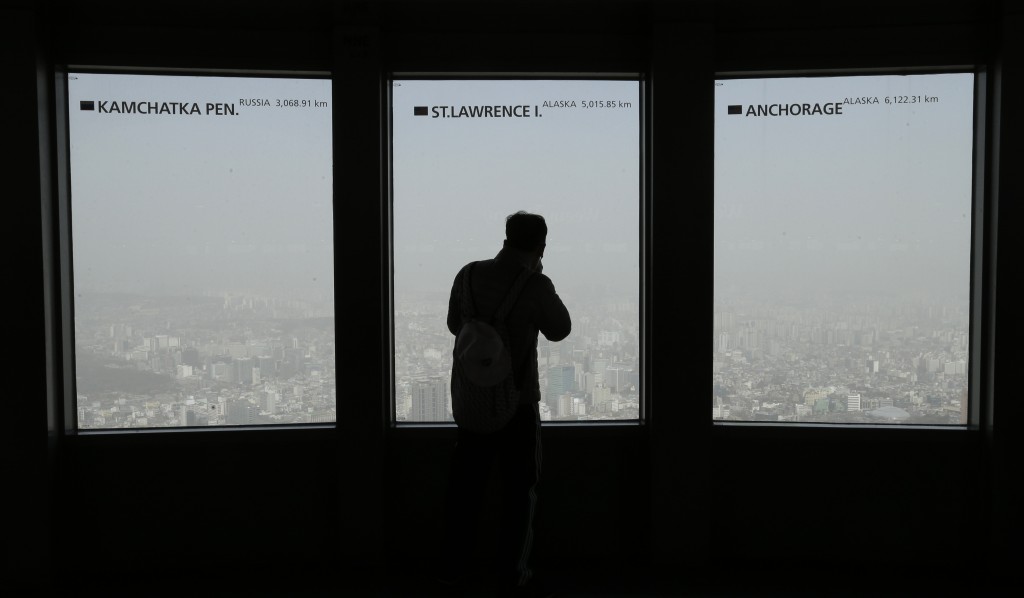- California Assembly OKs highest minimum wage in nation
- S. Korea unveils first graphic cigarette warnings
- US joins with South Korea, Japan in bid to deter North Korea
- LPGA golfer Chun In-gee finally back in action
- S. Korea won’t be top seed in final World Cup qualification round
- US men’s soccer misses 2nd straight Olympics
- US back on track in qualifying with 4-0 win over Guatemala
- High-intensity workout injuries spawn cottage industry
- CDC expands range of Zika mosquitoes into parts of Northeast
- Who knew? ‘The Walking Dead’ is helping families connect
Korea, China, Japan to intensify fight against yellow dust

A man watches the city skyline covered with a thick haze caused by yellow dust at Seoul Tower’s observation deck in Seoul, South Korea, Monday, Feb. 23, 2015. The Seoul metropolitan government issued a dust warning, urging people to stay indoors. ( AP Photo/Ahn Young-joon)
SEJONG, South Korea (Yonhap) — South Korea, China and Japan have agreed to strengthen a joint research project to combat yellow dust originating in China’s northern provinces, a local environmental research body said Monday.

FILE — Runway lights are lit at Incheon International Airport, west of Seoul, amid a cloud of yellow dust blowing from China on Feb. 23, 2015. (Yonhap)
The three countries have decided to increase the number of monitoring stations and the period of analysis starting next year, during the 18th Expert Meeting on Long-range Transboundary Air Pollutants in Northeast Asia held last week, the National Institute of Environmental Research (NIER) said.
In South Korea, besides three existing ones, an additional measuring point will be constructed on Baengnyeongdo Island, the nation’s westernmost island, located close to the inter-Korean border.
China and Japan have also decided to additionally establish a monitoring station on Tuoji Island and one on Tsushima, respectively, according to the NIER.
The measurement targets include particles smaller than 10 micrometers in diameter, also called PM 10 concentrations, as well as PM 2.5, sulfur dioxide and nitrogen dioxide, the organization said.
In terms of ultrafine particles of PM 2.5, the three countries have agreed to share measurement data and analyze together in order to increase the accuracy of their research.
The joint research project was launched in 1995 following South Korea’s proposal to more effectively deal with dust storms from China, which affects the lives of citizens and industries in the three countries.
After three decades of rapid industrialization, China regularly sees hazardous air pollution with levels of particulate matter rising to nearly 40 times the limits set by the World Health Organization during the winter months.
The levels of air pollution in South Korea have also been jumping during the winter months, as westerly winds carry smog from China to the Korean Peninsula, causing environmental and respiratory damage.












![일본 사도광산 [서경덕 교수 제공. 재판매 및 DB 금지]](http://www.koreatimesus.com/wp-content/uploads/2024/07/PYH2024072610800050400_P4-copy-120x134.jpg)



kelly
November 23, 2017 at 4:52 PM
Very nice and always successful.
This is a very good article.
I’m waiting for you the other article.
togel online